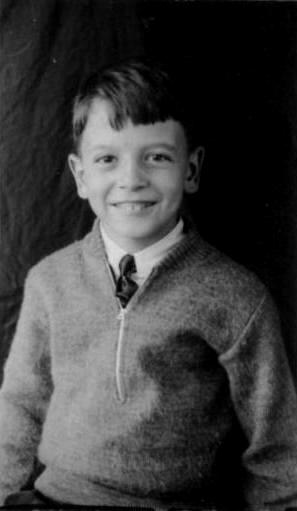
Figure 1.--This American boy's school portrait shows him wearing a sweater in 1935. Note the zipper. This was not very common. We see far more pull-overs in England. |

|
We have substantial information about sweaters worn at schools. They are a major schoo item in most countries ecxept those with tropical or subtropical climates. We do not have much information yet on sweaters during the 19th century. Sweaters existed in the late-19th century, but they wre not yet a major garment type for children and seen commonly at school. We believe the sweater was primarily a school garment that became popular in the early-20th century. We have much more detailed information on the 20th century. The first time we see large numbers of children, at first mostly boys, wearing swaters is the 1910s, although we are just beginning our assessment. The sweater was widely worn to school throughout the 20th century beginning in the 1910s. This is especially after World War I when school wear began to become more casual. Styles varied by decade as sweaters increased in popularity and new styles appeared. There were substantil variations from country to country. We see sweaters with rolled collars in American schools in the 1910s. This seems a destinctively American style. V-neck sweaters worn with ties seem especially popular in Briitain by the 1920s. Here different styles were popular and this was not a matter of varying time lines. We have just begun to build a time-line of sweater trends. We have detailed informstion on America and Germany, but are just beginning to develop information on other countries. After World War II by the 1970s we see sweaters becomong a part of the pan-European fashion trends, although climatic variation did provide some diversity. We also see a trend toward synthetic fibers after WWorld War II because of the high cost cost of wool sweaters.
We do not have much information yet on sweaters during the 19th century. Sweaters existed in the late-19th century, but they wre not yet a major garment type for children and seen commonly at school. The photoigrapoh record shows few exanpmes odf sweaters beung worn to school during the 19th century, even the late-19th centuy. This reflects the general fashion trend. We do not see many childremn wearing sweaters at the time. We think his wa in part because sweaters were not yet a popular garment. In addition, the sweater was more of an infiormal garment, not seen by many moters as suitable for school.
We have much more detailed information on school sweaters for the 20th century. The sweater situation changes dramatically after the turn of the century, especially by the 1910s. School poertaits at first continue io show few sweaters (1900s). The next decade was very different (1910s). The first time we see large numbers of children, at first mostly boys, wearing sweaters is the 1910s, although we are just beginning our assessment.
The sweater was widely worn to school throughout the 20th century beginning in the 1910s. This is especially after World War I when school wear began to become more casual. Much of our information comes from America and it is the 1910s that we first see large numbers of sweaters at school. We think this pattern was basically the same in other countries, but this needs to be confirmed. We believe the sweater was primarily a school garment that became popular in the early-20th century. Styles varied by decade as sweaters increased in popularity and new styles appeared. There were substantil variations from country to country. We see sweaters with rolled collars in American schools in the 1910s. This seems a destinctively American style. V-neck sweaters worn with ties seem especially popular in Britain by the 1920s. Here different styles were popular and this was not a matter of varying time lines. Here we see anb Ebglish sweater ith a partial zipper front, worn rather like a V-front (1935). V-frints were a popular school sweater style in England. We have just begun to build a time-line of sweater trends. We have detailed informstion on America and Germany, but are just beginning to develop information on other countries. After World War II by the 1970s we see sweaters becomong a part of the pan-European fashion trends, although climatic variation did provide some diversity. We also see a trend toward synthetic fibers after WWorld War II because of the high cost cost of wool sweaters.
Navigate the HBC School Section:
[Return to the Main school uniform sweater page]
[About Us]
[Activities]
[Chronology]
[Clothing styles]
[Countries]
[Debate]
[Economics]
[Garment]
[Gender]
[Hair]
[History]
[Home trends]
[Literary characters]
[School types]
[Significance]
[Transport and travel
[Uniform regulations]
[Year level]
[Other topics]
[Images]
[Links]
[Registration]
[Tools]
[Return to the Historic Boys' School Home]
